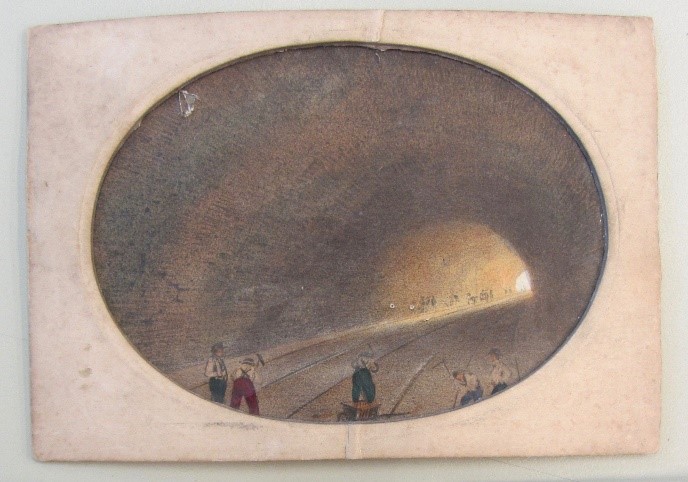Pocket-sized theaters constructed with paper and bellows … paper peepshows!

Paper peepshows or teleoramas were first published in the 1820s by a German book and art seller called Heinrich Friedrich Műller. His concept owes much to 18th– century optical curios, such as the cosmoramas which were built into gallery walls or the cumbersome boîtes d’optique, which were large, wooden boxes with multiple scenes. In contrast to their predecessors, Műller’s teleoramas were small and primarily constructed from paper and cloth … They consisted of staggered paper panels which were connected at the sides by flexible material bellows. The front and back boards of the peepshow pulled apart, to reveal a concertina structure and the diminishing paper panels created an effect of receding perspective, which lead the viewer’s gaze towards the back scene.
Katy Canales, 2016
I’ve seen a lot of excellent examples that use this construction – contemporary ones too, such as this tunnel book by Andrea Dezsö:

This article by Marie-Alix De Cools (at the Book Conservation department at the V&A Museum) details a really interesting example from c. 1860, which uses a different approach to the bellows and also uses layers and pinholes to create varying effects for the viewer.


The prints, when viewed outside the device in reflected light, show views by daylight of various popular destinations such as the ‘Rue de Rivoli’ or ‘Jardin des Tuileries’. When viewed through the peephole, against a strong source of light, the transmitted light changes them to night scenes in which small holes pierced in the prints become the stars, the moon, or lit windows and street lamps...here in Le tunnel de Rolleboise a train bursts into view where before there was only an empty tunnel with some men at work.

The ‘day’ picture is printed on the recto (front), while the ‘night’ picture is obtained by painting the verso (back) side in black and other dark colours. The contours of the train and the lighter areas were then drawn and defined using a kind of sgraffito technique. The dark paint was thus scratched away in places where the light was meant to shine through.

